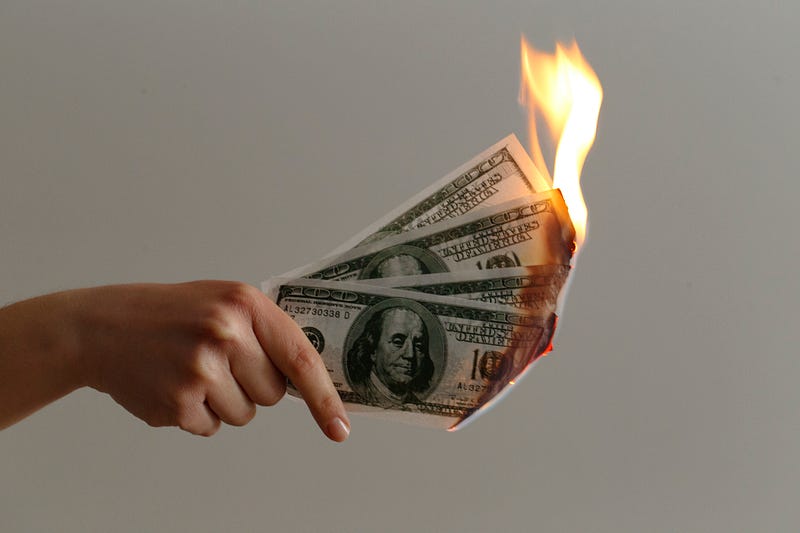A discussion of “A Skeptic’s Guide to Modern Monetary Theory”
A sexy new economic theory appeared in the last few years promising us that government debt really is nothing to worry about.
Modern Monetary Theory (MMT) says a nation that spends, taxes and borrows in a fiat currency they control can spend as much as they need without worrying about becoming insolvent. Whatever amount of money is needed can be printed.
I dismissed it when I first heard of it because that sounded ludicrous — debt does not matter? The size of the money supply does not matter?
While it is not a mainstream theory of macroeconomics, it has gotten a lot of attention because it is exactly what some politicians want to be true. There would be no more reason to deny preferred spending initiatives based on “we cannot afford it.”
But is there something there? Could we actually have a money tree at our fingertips and just not know it?
I am not a macroeconomist by specialty so when I saw Greg Mankiw’s analysis of the theory I thought it was worth examining. He is a macroeconomist who has authored one of the major textbooks in economics.
What is the theory saying?
Mankiw (2020) read the textbook, Macroeconomics, authored by the 3 MMT proponents: William Mitchell and Martin Watts of the University of Newcastle, Australia, and L. Randall Wray of Bard College. I will use Mankiw’s abbreviation, MWW, to refer to them, too.
Mankiw acknowledged being vexed by the theory at first, wondering if his frustrations came from being too steeped in mainstream macroeconomics thinking.
I had the exact same experience so I was anxious to see what he could deduce from a theory that is so at odds with what I had been taught.
To be fair, I will let MWW explain their theory in their own words as Mankiw (2020, p. 141) did.
The most important conclusion reached by MMT is that the issuer of a currency faces no financial constraints. Put simply, a country that issues its own currency can never run out and can never become insolvent in its own currency. It can make all payments as they come due…for most governments, there is no default risk on government debt.
Mankiw shares his initial 3 objections. (p. 141)
- If the government prints more money to spend more, some of the increased spending will end up in the banking system. A certain percentage of all deposits has to be held in reserve though a bank can hold more than the minimum. In today’s system, the Federal Reserve pays interest to banks, called Interest on Reserves (IOR). Thus, the increased spending will require even more spending as the government prints more money to pay the interest. All this money supply increase will likely result in inflation, whether in prices or assets or both.
- IOR is needed in today’s system because of the large amount of reserves given the Fed’s responses first to the 2008 financial crisis and then to the 2020 economic shutdown. If IOR is not high enough, banks will lend out the extra reserves instead. This, too, is inflationary.
- While technically a government could keep printing money to cover its obligations, these inflationary forces can runaway into hyperinflation. At that point, default may be preferable to continuing to print money.
The above encapsulates my thoughts as well — MMT will lead to inflation, most likely ruinous hyperinflation.
So how could they stand by their theory?
Because they disagree with the mainstream economic theory, Quantity Theory of Money, that says increases in money supply lead to increases in the price level. (Inflation is defined as the percentage increase in the price level.)
Instead, MMT argues class conflict as the source of inflation. Mankiw cites MWW explaining,
Conflict theory situates the problem of inflation as being intrinsic to the power relations between workers and capital (class conflict), which are mediated by government within a capitalist system. (p. 142)
Oh boy, Marxism!
So what do they mean by that? Inflation is not a monetary phenomenon like Quantity Theory of Money described above says.
No, it is caused by workers and capitalists fighting for limited resources. Thus, the solution would be price and wage controls to fight inflation.
I guess they have not read about President Nixon’s failed efforts at fighting inflation in the 1970s with price and wage controls.
Heck, I guess they have not read any intro microeconomics textbook that shows price and wage controls cause shortages, distortions, and other market problems.
If the conflict theory was right, does that mean that when there is no inflation there is no conflict? So then what makes the conflict increase in some periods and not others? Is it just a coincidence that the conflict increases at the same time as the massive money printing?
Maybe I am just simple, but it seems pretty clear to me that when economic policies have not substantially increased the amount of goods being produced, but they do increase the amount of money circulating around, then the prices for those goods are going to go up.
Mankiw does say MMT advocates are willing to say my simple understanding is theoretically a concern but since the economy is, in their view, rarely at full employment, it is not a concern in reality.
Conclusion
I have to say I still think MMT is not going to work in real life. The Quantity Theory of Money seems a lot more likely to hold. Mankiw cites “since 1870, the correlation between inflation and money growth is 0.79.” (p. 142) That is a pretty high correlation between changes in the money supply and changes in the price level.
And now that I know MMT relies on Marxist conflict theory thinking, I have even less reason to believe its predictions.
If we do adopt MMT in the US, it will take a long while to hit the critical point compared to a smaller country that has to use foreign exchange to buy and sell goods.
But even the US will hit some amount of government debt that will seem risky to buyers of the government bonds. To compensate for that risk, the interest rate on US bonds will have to rise. That leads to interest on the debt becoming a bigger and bigger part of the budget.
A terrible cycle begins:
- We print money to do whatever spending we deem needed according to MMT.
- The government debt grows.
- The interest rate rises to attract investors.
- We need to print more money just to cover the growing interest on the debt.
- The debt grows even more, interest rates have to rise, and so on.
The most likely outcome is a date where we cannot make the interest payments on at least some of the outstanding debt — that is default and a financial crisis.
The other possibility is hyperinflation due to the increases in the money supply, which will also mean a financial crisis.
My favorite economics quote after Adam Smith’s invisible hand is Herbert Stein’s statement, “If something cannot go on forever, it will stop.”
MMT, if we are ever unfortunate enough to see it enacted, will result in hyperinflation and a debt default. There is no money tree.
Or to put it another way, if it sounds like it is too good to be true, it is.
Reference: Mankiw, M. Gregory. 2020, “A Skeptic’s Guide to Modern Monetary Theory.” AEA Papers and Proceedings, 110:141–144.




